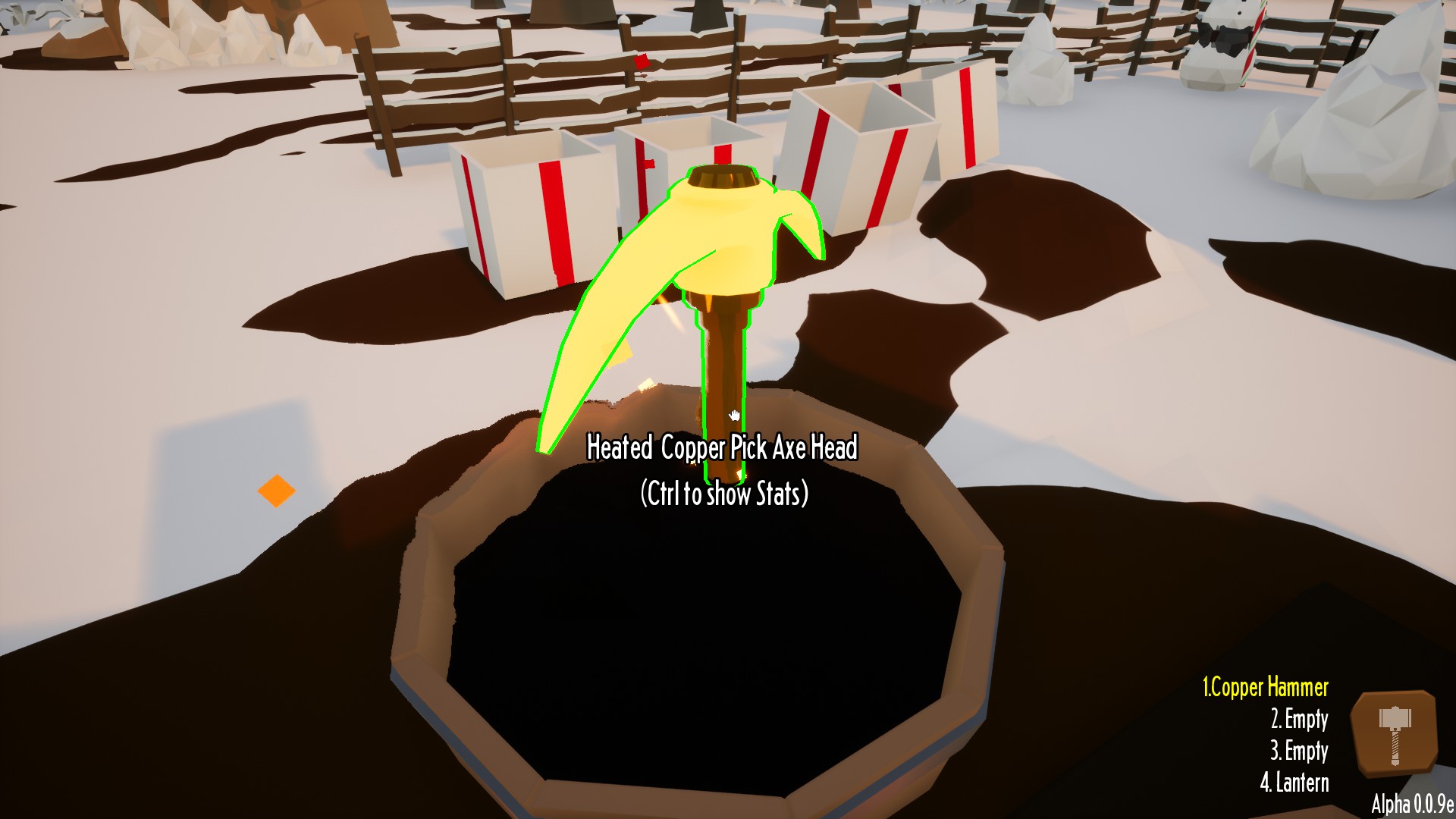My Little Blacksmith Shop is relaxing and overwhelming at the same time
Making gear for fantasy heroes turns out to be no easy task.

An adventurer with a pink shirt and luminous green beard steps over the threshold. They're after a one-handed copper sword, and they've come to the right place. The copper ingots are already heating on the forge. I kick into action, flicking two red-hot ingots onto the anvil, whacking them the exact number of times I need to get a split blade—my preferred style—before dropping it in oil to cool it down. When it hisses I fling it onto the workbench, where it merges with the handle I've already laid out. I rush the sword back to the adventurer. A mere 30 seconds after they arrived, my first customer of the day is walking out satisfied, and my coffers are 100 coins heavier.
It all happens without me having to think. After a few days crafting daggers, axes, shields and polearms for the townsfolk, you'll memorize the recipes in My Little Blacksmith Shop and set up a systematic production line in which no time is wasted. You can switch your brain off and let muscle memory take over, occasionally grabbing breaks to play with the silly physics or look up at a sunset. It's bliss.

The trouble is that the fun is hidden beneath piles of annoying quirks, bugs, and redundant features. You can't play it without reading the wiki thoroughly to get a grasp of the basics, because nothing is explained in-game.
...the fact it's both free and in an alpha stage of development means I don't mind putting myself through the bad bits to get to the good.
I learnt that the hard way. On my first day a miner called Alison asked for a pickaxe. I bashed together the head of the item, stuck it onto a handle, and voila: order fulfilled. Or so I thought. When I took it up to the counter Alison stood there staring at me blankly, refusing to budge. I noticed the text overlay for the weapon simply said "common one-handed grip". After some reading, I discovered a pickaxe needs a two-handed grip rather than a one-hander, which is odd because you carry it with one hand in the game. I was stuck with a useless item I couldn't break apart, and no longer had enough coins to buy more supplies. My game was effectively over.
My Little Blacksmith Shop encourages you to step away from the forge by placing points of interest around its small town, but they're mostly uninviting. If you don't want to pay for items through your shop's automated order system, which drops boxes of goods on demand, you can walk to the mines and chip away at ore veins. You can smelt the ore you get into ingots, which saves you money, but it's a faff. Your character moves painfully slowly, even at a sprint, and so a trip to the mines costs you most of the day. Plus, you can't carry much ore, so you need to bring crates. To do that you really need a horse and cart, which has been removed from the current version of the game because of bugs.
The west of town is similarly disappointing. After my first day I strolled towards the sunset, coming to a bridge with a sentry guard at either side. The path looked like it should lead somewhere, but it was a long walk to a dead end. Just when I'd worked that out I got tired and lost the ability to sprint. Crawling back to my bed was a chore, and when I finally woke up and flung my door open, the best part of the next day and most of my customers had gone.
And while the art style is cute, the interface is a mess. Your buyers' names—cribbed from YouTubers or donors—float above their heads in bawdy, colorful letters, and the countdown timer for their orders clips inside their skulls. Your shop's ordering system looks like a computer, complete with scrolling bars, which feels out of place on the side of a wooden cabin. And when you successfully build an item, the pop-up message overlays on top of your inventory in the bottom-right of the screen, creating an alphabetti spaghetti jumble of letters.
Keep up to date with the most important stories and the best deals, as picked by the PC Gamer team.
It's a lot to forgive, I know, but the fact it's both free and in an alpha stage of development means I don't mind putting myself through the bad bits to get to the good. I've always enjoyed shop sims like Recettear, and if you give My Little Blacksmith Shop the time, it will scratch that same itch.
The joy is in the simple things. Organizing your workshop just how you like it, placing handles and guards on the most convenient shelves and stacking ingots next to your forge in neat rows. Preparing for a busy day by chopping down trees under the stars and balancing the logs near your woodworking bench, ready to be cut into shields when customers arrive. Making up your own stories about the voiceless adventurers who visit. (I like to think they're all meeting in a tavern somewhere, praising the way I craft my split-blade swords.)
I like cracking open a new order of ingots and seeing how many I can throw onto my forge without missing.
I enjoy sinking into the crafting too, and hitting an ingot results in a loud clang and a shower of sparks. There's no real reason to work efficiently because customers give you an age to fulfill their orders, but it feels good to experiment with the sequence of tasks, gradually getting into a rhythm and shaving seconds off the time it takes to make each weapon.
The physics are fun to play around with, too. You right-click on objects to grab them, and by swinging the mouse and letting go at the right time you can fire things a fair distance. I like cracking open a new order of ingots and seeing how many I can throw onto my forge without missing.
The small development team have plenty of things to fix before I can recommend My Little Blacksmith Shop, but it has potential. If they can focus on that core loop of fulfilling orders and slowly amassing a fortune, and perhaps throw in some options to customize your shop, then I can see myself coming back to it. Right now, playing My Little Blacksmith Shop is just a little too much like hard work.
Samuel Horti is a long-time freelance writer for PC Gamer based in the UK, who loves RPGs and making long lists of games he'll never have time to play.


